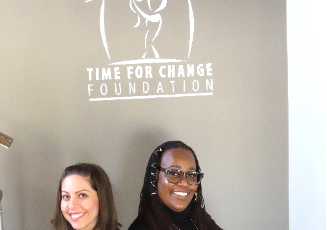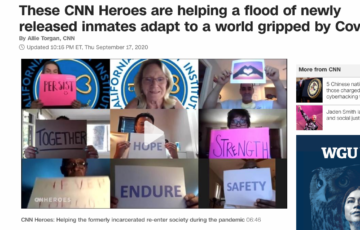Ending the prison-to-homelessness cycle for women
Opinion: Ending the prison-to-homelessness cycle for women
Formerly incarcerated women, especially women of color, are more likely to be homeless than men
California has made important strides in advancing criminal justice reform over the past few years. But if we want to truly stem the generational impact of mass incarceration and make sure that formerly incarcerated people can get their lives back on track, we must do all we can to increase their access to permanent affordable housing.
Across California, formerly incarcerated people make up a significant share of the surging homeless population. In Alameda County alone, at least 20,000 people — disproportionately people of color — face housing instability because of their records. Formerly incarcerated women are more likely to be homeless than formerly incarcerated men, and if you are a woman of color, the chances of leaving prison only to live on the streets are even higher.
Earlier this month, Gov. Gavin Newsom signed into law several bills aimed at tackling California’s housing affordability crisis. Together, the measures put California squarely on the front lines among states in advancing positive and progressive housing solutions. But we can and must do more to create safe and affordable housing for women and their families, particularly those who have been affected by incarceration and addiction.
What started as one home with 6 beds quickly grew into three emergency shelters, 10 permanent supportive housing units and building our own permanent affordable housing facility, the Phoenix Square. Over time, our work has continually expanded in response to the challenges in the communities we serve. To date, we have helped more than 1,500 women make the transition from homelessness and incarceration to self-sufficiency.
Now we are bringing our work to the Bay Area with the opening of our first emergency shelter facility in Hayward. Brighter Futures offers onsite case management, life-skills education and other vital services. The women who live there can stay as long as they need until they are able to transition into self-sufficiency.
Brighter Futures is just the beginning: Long term, we aim to grow our reach in the Bay Area to build additional affordable housing to serve women and families, based on the model we successfully started in San Bernardino.
In the Bay Area and across California, it’s too often the case that we are recycling homelessness and incarceration. I know from experience that women of color who are coming out of the criminal justice system face huge barriers to turning their lives around. But one of the biggest barriers by far is the high cost of housing in California. How can women and their children be expected to make it when half or more of their income is going toward rent? Sadly, many also are losing their parental rights because they can’t afford to provide stable housing for their children.
Our work has shown that tackling the housing crisis for women and families recovering from homelessness, addiction and incarceration requires a range of solutions. We need more emergency shelters for women and families in crisis. We need more permanent housing where families are connected to intensive case management, legal and financial services. And, we need more affordable housing where families with low incomes can live and build a successful future.
Policymakers, advocates, funders, providers and more must work together to break down barriers to access to affordable housing for formerly incarcerated women in our state. We must step away from the bureaucracy and embrace innovation.
Click here to read more on Mercury News.





